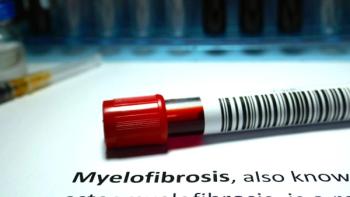
Interdisciplinary Teams Can Help Decrease Hospital Readmissions
Hospital readmissions soon after discharge can be costly and detrimental to patient care, but according to a recent study conducted at the Cleveland Clinic and presented at the 2017 American Society of Hematology’s Annual Meeting and Exposition, creating an interdisciplinary team to work with patients can help.
Hospital readmissions soon after discharge can be costly and detrimental to patient care, but according to a recent study conducted at the Cleveland Clinic and presented at the 2017 American Society of Hematology’s Annual Meeting and Exposition, creating an interdisciplinary team to work with patients can help.
At the Cleveland Clinic, about 6 percent of patients account for up to 40 percent of unplanned hospital readmissions, meaning that they happen within 30 days of discharge, and emergency room visits, many of them being patients with cancer.
“These patients continue to be the highest risk of future admissions, ICU stays, ED visits, overuse of chemotherapy and underuse of hospice resources,” the authors wrote.
In an effort to decrease the number of readmissions, researchers at the Cleveland Clinic created interdisciplinary care teams made up of palliative medicine and oncology physicians, social workers, care coordinators, advanced practice providers and nurses. Teams were then paired up with patients who seemed to need it most — 36 individuals who had at least two readmissions within a 60-day period.
“Although sometimes readmissions are unavoidable given the nature of the disease and progression and treatment side effects, there’s still room for improvement in unnecessary hospitalizations,” Girish Kunapareddy, M.D., a physician at the Cleveland Clinic and author on the study, said during the presentation.
Fifteen patients involved had a hematologic malignancy — seven (19.4 percent) had acute leukemia, five (13.9 percent) lymphoma and three (8.3 percent) were listed as “other.” For those with solid tumors, seven (19.4 percent) had a gastrointestinal cancer, five (13.9 percent) genitourinary cancer, three (8.3 percent) breast cancer, three (8.3 percent) lung cancer and three (8.3 percent) were listed as “other.”
Individualized care plans were then created, “using a team-based approach with parallel input from the patients’ primary outpatient oncology providers,” the authors wrote.
And for many, the intervention worked.
The average number of hospitalizations for the whole group was .89 per person per month. That dropped to .36. The number of 30-day readmissions dropped from .43 per person per month to .13, and the number of emergency department visits saw a decrease, too, moving from an average of .58 per person per month to .34.
Not only were patients visiting the hospital less after working with an interdisciplinary team, but when they did, they tended to be there for a shorter period of time, too.
For all patients, the average hospital stay before the intervention was 7.17 days, and after it was 4.06. For the hematology group specifically, the average time per stay went from 6.24 days to 2.55 days, and for those with solid tumors, the stay went from an average of 8.48 days to 6.17.
Patients with hematology malignancies benefitted less, due to the nature and biology of the disease, Kunapareddy explained.
“Moving forward, we’re hoping to have a more selective process with hematology patients, where we would exclude patients less than 100 days out from a hematopoietic stem cell transplant or patients undergoing salvage therapy where the only unplanned admissions are for neutropenic fever,” he said. “So that our resources will be better utilized.”





